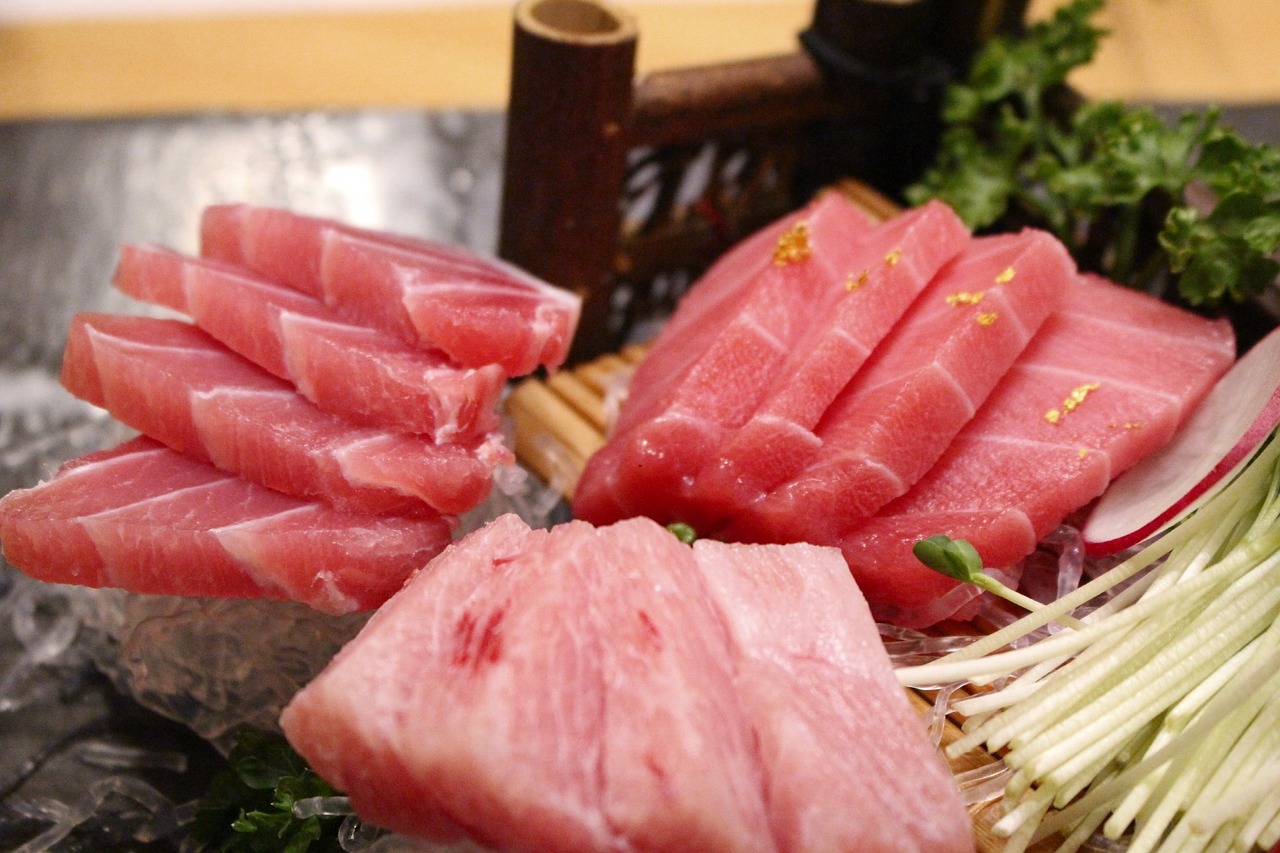
Tuna is one of the most consumed fish worldwide. Belonging to the tuna family, it's known for its firm meat, intense flavor, and high nutritional value. There are different species, such as bluefin tuna, white tuna (albacore), yellowfin tuna, and skipjack tuna.
Where does tuna live and what does it eat?
Tuna inhabits temperate and tropical oceans. They are tireless swimmers and can travel thousands of kilometers per year. They feed on small fish, crustaceans, and squid, positioning themselves at the top of the marine food chain.
History and global consumption

Cultures like Japanese, Spanish, or Italian have valued tuna for centuries. Bluefin tuna, for example, is the base of quality sushi. In Spain, albacore in cans is a tradition. Its fishing and commercialization have a great economic and cultural impact.
Nutritional properties of tuna
Outstanding nutritional benefits:
- High in high-quality proteins (25g per 100g)
- Source of omega 3, which helps the heart and brain (1.5g per serving)
- Rich in vitamin D, B12, phosphorus and selenium
- Low in carbohydrates and sugars
- Calories: 180 per can
This makes it an ideal food for athletes, children, and older adults. Additionally, according to the FAO, fish in general is highly nutritious, easy to digest, and offers essential minerals such as calcium, iron, iodine, and phosphorus.
Tuna consumption in Paraguay
Canned tuna is one of the best-selling products in supermarkets and grocery stores in the country. Although it's not part of traditional Paraguayan cuisine, it has become popular due to its practicality, flavor, and versatility in dishes like salads, empanadas, or pasta.
According to the FAO, fish consumption in Paraguay is just 1.1 kg per person per year, in contrast to the more than 64 kg of red meat consumed annually. This trend reflects great potential to promote healthier alternatives like fish.
Additionally, in countries like Peru and Ecuador, fish consumption exceeds 14 kg per person per year, which shows cultural and access differences. Promoting the nutritional value of fish in Paraguay represents an opportunity to improve the population's diet.
Types of canned tuna: water, vegetable oil or olive oil?

In the market there are three main formats of canned tuna: in water, in vegetable oil and in olive oil. Each one has its own characteristics:
Comparison of preservation types:
🥫 Tuna in water- Characteristics: Light and low-calorie option
- Benefits: Preserves natural tuna flavor
- Ideal for: Low-calorie diets
- Characteristics: The most common, mild flavor
- Benefits: Good texture and accessible
- Ideal for: General cooking use
- Characteristics: The most gourmet
- Benefits: Intense flavor, cardiovascular benefits
- Ideal for: Gourmet dishes
In Paraguay, consumption of tuna in vegetable oil predominates, although more and more consumers demand superior quality and opt for premium brands in olive oil.
Tuna curiosities
Fascinating facts:
- 🐟 Tuna can swim at more than 70 km/h, being one of the fastest fish in the ocean
- 🌡️ It's one of the few fish that regulates its body temperature, allowing it to move between depths with ease
- 🎣 A bluefin tuna can live up to 40 years and weigh more than 600 kg
- 🌊 They can dive to depths of up to 1000 meters
- 🧭 They use Earth's magnetic field to navigate in their migrations
Featured recipe: Mediterranean salad with tuna
A simple and delicious way to enjoy tuna is with a Mediterranean salad:
Ingredients:
- 1 can of tuna in olive oil
- Cherry tomatoes
- Cucumber
- Red onion
- Black olives
- Feta cheese
- Lemon
Preparation:
Mix everything and serve with toasted bread or rice crackers. Ideal as a fresh lunch or light dinner.Did you know that at Gades Imports we work with gourmet tuna products selected directly in Europe?
Very soon you'll be able to discover our exclusive brands and formats. Meanwhile, you can get in contact to learn more.




